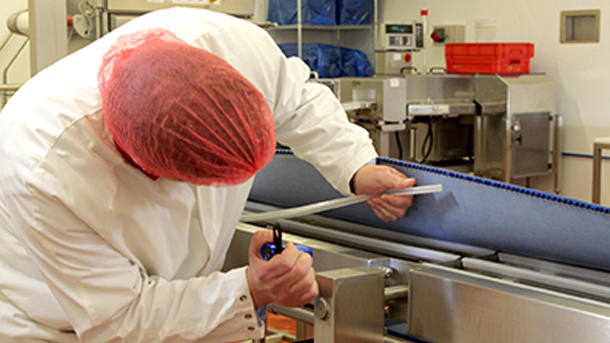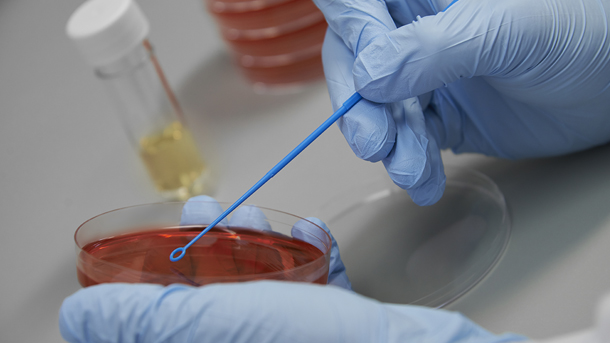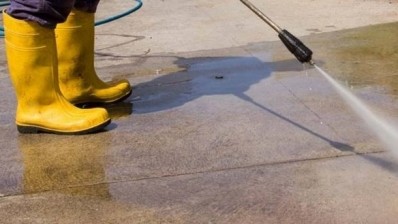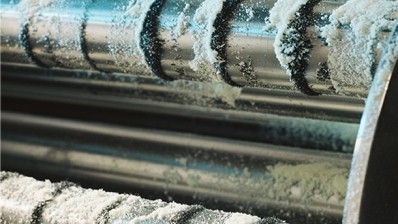Food safety update: biocides defy clean definition
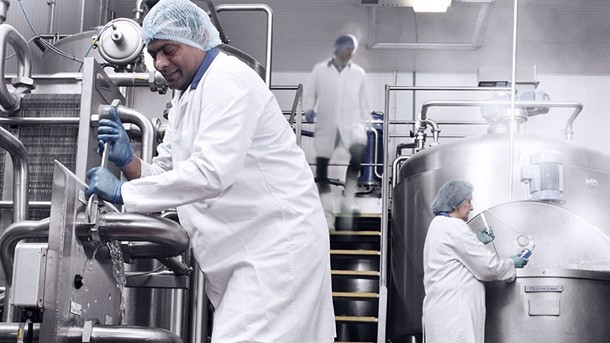
The regulation of biocides used in the food industry is throwing down challenge after challenge both for manufacturers, unsure which products they can use and with what results – now and in the future – and for formulators of disinfectants, saddled with the increasing costs of compliance and reformulation.
Kaarin Goodburn, director of the Chilled Food Association (CFA), has worked extensively in this area. “Around 20 years ago, a colleague said: ‘Watch out for this one.’ I said I’d be retired by then,” she recalls.
Biocide regulation may have hit her desk long before retirement, but it might easily keep her busy until then.
As a regulatory area, it has much in common with other EU rolling assessment and approval processes where safe levels are set and interim levels are established while this process is taking place.
What makes it different – and more problematic – is the fact that while many biocides are used as active agents in disinfectants, they may also have been used in pesticides and herbicides.
These products fall at the overlap between the UK’s Biocidal Products Regulation (BPR), enacting EU law, and the Plant Protection Products (PPP) legislation.
Biocides that have not been assessed by the European Chemicals Agency (ECHA) for a specific maximum residue level (MRL) are given default MRLs under the PPP, which – in theory – are set at the limit of quantification.
What is certainly true is that they are set so low that industry is highly incentivised to submit a dossier to the ECHA.
This legal overlap leads to some interesting (and often challenging) anomalies.
Active biocides such as chlorates, which were used in herbicides before being banned inside the EU in 2010, and quaternary ammonium compounds, also known as quats, are no longer used for plant protection, but are regulated under the PPP as if they were.
Biocides paradox (Back to top)
The paradox is that MRLs under the PPP were set not on the basis of safety but with regard to good agricultural practice, said the CFA.
Many question why the PPP is considered a sound basis for the regulation of biocide use in food manufacture at all.
At hygiene products company Holchem, technical director John Holah points out: “Quats might be in throat lozenges, for example, at a level way above that set for pesticides, and yet, they are seen as being safe.
“The MRL for pesticides is not set as a safety level but really to deter malpractice.”
Peter Littleton, who is technical director at cleaning products firm Klenzan and is on the board of the Society of Food Hygiene and Technology (SOFHT), recently gave a presentation on the impact of restrictions on the use of disinfectants in the food and drink manufacture at an event organised by SOFHT.
Littleton believes that, until recently, around 80% of UK food industry disinfectant use was quats-based. Stringent hygiene routines on this basis had contributed to listeria levels “lower than the rest of Europe”, he said.
This is despite the fact that the potentially high-risk chilled foods sector is proportionately much larger in the UK than in other EU countries.
“Quats have not yet been given an MRL, and are not scheduled for assessment until 2017–18,” said Littleton. “But in fact, the BPR assessment process is currently running around eight years behind schedule.”
In the interim, even though the default MRL of 0.01 parts per million (ppm) was raised by agreement to 0.1ppm, the practicality of being able to meet this threshold, together with the overall atmosphere of uncertainty around these active compounds, has persuaded many to move away from quats altogether.
Future of quats (Back to top)
Despite the advantages of quats, there are concerns that they might move out of authorisation while undergoing assessment.
And many suspect that once food businesses leave them behind, they will not return to them.
“I think the UK food industry has changed its stance on quats,” said Holah at Holchem. “Around 50% of quats usage has moved to other actives which don’t have an MRL.”
Naturally, food manufacturers have the option of rinsing off detergent which has been applied to surfaces before use, and potentially meeting residue limits that way.
But in the UK, at least, this flies in the face of accepted best practice in preventing listeria.
The CFA and others in the industry are concerned that, when the ECHA does finally assess quats, it should not allow itself to be guided by MRLs under the PPP.
“I want to have food hygiene taken into account in any risk assessment,” Goodburn said.
She highlights as a precedent the World Health Organisation’s (WHO’s) risk assessment, a decade ago, of chlorate in water. This factored in lives saved through the avoidance of cholera outbreaks.
Meanwhile, as she said, an industry that is under legal obligations to disinfect its work surfaces is left “dangling”.
Or, in the words of Holah at Holchem: “Industry is left asking, do you want us to comply with regulations which were never intended to apply to disinfectants, or do you want us to continue fighting listeria?”
One reaction to this uncertainty is to stay with the status quo. As the CFA’s Goodburn said: “Quats are pretty much the most effective biocide against gram-positive organisms.
“In fact, there is no legislated reason to move away from them. The reduced MRL of 0.1ppm, which came in a year ago, applies to food, not non-food-contact materials such as drains or floors.”
The HSE’s role (Back to top)
Just to complete the ‘circle of uncertainty’, no one can even be sure what the consequences will be if residue levels are in fact detected above the 0.1ppm threshold.
As Holchem’s Holah explains, the Health & Safety Executive (HSE) is the UK body responsible for enforcing regulation in this area and testing samples.
Responsibility for judging whether a tested product is ‘unsafe’ and whether a recall is required lies with the Food Standards Agency (FSA), he said.
He adds: “There have been statements from the FSA and HSE implying that, just because a biocide MRL is breached, this would not necessarily lead to a recall. There is a tacit recognition that this is not a food safety issue.”
No one from the HSE was available for comment.
Another reaction, apparently already evident from sales figures, is to look for alternatives.
“A significant proportion of our customers have moved away from quats to triamines [as the active agent in disinfectants], so they can maintain a no-rinse system,” said Holah.
Disinfectant formulator Byotrol is one of those openly beating a retreat away from quats. Sales manager Joanna Spree will not disclose the active agents in its latest range of surface sanitisers, which are approved by Marks & Spencer.
But she said: “It’s a synergistic blend of biocides which, when used with a polymer, provides us with long-lasting protection.”
In a blog, Byotrol describes how the number of biocidal actives available is likely to reduce under the BPR from around 750 to 250.
This company, like other suppliers of disinfectants, warns that the cost of its products is likely to rise as the regulation bites, with more reformulation and testing required.
At the same time, it said, the new alternatives may be less effective than the previous generation of products.
“Given that it costs around £1M to register an active, the large chemical producers are not registering new biocides,” said Littleton.
“Then, submission of a dossier is required for each formulation that these actives are built into. That can cost formulators £100,000 to £200,000 per product.”
He agrees that the price of biocides and disinfectants will increase over the next four-to-five years.
Quats are not alone in presenting the food and drink sector with a dilemma. “High levels of chlorates have been picked up in fresh foods,” Littleton reports.
“The majority of this was believed to have been from chlorine-based cleaning materials or chlorinated water.”
Chlorates from water (Back to top)
In fact, there is a significant conflict between the approaches taken with food and water.
Goodburn at the CFA explains: “Since tap water is needed if any rinsing is to be done, that will be a source of chlorate, for which MRLs are currently being determined by the European Commission. But there is no chlorate MRL for drinking water.”
According to Holah, the UK water sector has set its own acceptable level for chlorate in drinking water at 0.7ppm.
Again, whether the food industry will be using chlorates in a few years’ time, or will even be able to wash produce in tap water, is open to question.
But by then, of course, the UK may have officially left the EU and be laying a regulatory highway all of its own.
Many predict that, if the UK wants to maintain strong and favourable trading links with the EU, regulation in this area, as in others, will need to remain harmonised with Member States.
Even if that is not the case, regulatory changes seem highly unlikely in the short term.
“Do I see the legislative framework changing dramatically over the next two-to-four years?” asks Littleton. “No, not really.”
Then he adds one final twist to this tightly-wound tale.
“Efficacy test regimes for a lot of products are becoming more stringent,” he said. “That means disinfectants will have to be stronger in order to kill more bugs, which means there will potentially be larger amounts of residue.”
If bleak irony killed microorganisms, there might be no need for biocides at all.
Klenzan technical director Peter Littleton will be giving a presentation titled ‘Biocides directive: where now for factory cleaning?’ at Food Manufacture Group’s one-day food safety conference ‘Boosting consumer confidence in times of change’.
At the same event, which takes place on Thursday October 13 at etc.venues, Prospero House, London, SE1 1GA, Dr Roy Betts, head of the Department of Microbiology at Campden BRI, will discuss whole gene sequencing in his talk on ‘Advances in microbial detection’.
For more details: visit:www.food-safetyconference.co.uk
Whole gene sequencing service launched by fera
A new service for food manufacturers called OriGen, which uses whole genome sequencing (WGS) to identify the source and trace the route of bacterial contamination, has been launched by Fera Science.
The service takes samples from across the product supply and processing chain to establish the exact source of a contamination using WGS.
It is accurate enough to pinpoint a single machine as the root cause of contamination.
“Food manufacturers know how expensive a recall can be, and how much damage a contaminated product batch can do to their reputation,” said Andrew Hudson, Fera’s head of microbiology.
“With OriGen, they’ll have the assurance that they are doing everything they can to find the root cause of the issue – and the confidence that they won’t have to see another costly recall due to the same product.”
Hudson claims that WGS allows for a new level of precision in dealing with bacteria entering the food supply chain, dramatically increasing the chances of minimising future contamination from the same source.
The new test can find the source of three major foodborne bacteria in the UK: salmonella, listeria and campylobacter.
A test for pathogenic E.coli is being made available due to the recent outbreaks and demand from the industry.
Meanwhile, Campden BRI’s Shiga toxin-producing E.coli (STEC) testing service has been accredited to the ISO/IEC 17025:2005 standard by the UK Accreditation Service (UKAS).
The polymerase chain reaction (PCR) method is sensitive enough to detect 2–40 colony forming units per 25g of sample and is absolutely specific for STEC.
Foods at particular risk of STEC contamination include raw meat, especially raw ground beef, and seeds intended for sprouting.
EU legislation requires the analysis of sprouted seeds for six STEC serotypes (O157, O145, O111, O103, O26 and O104:H4) prior to release onto the market.
